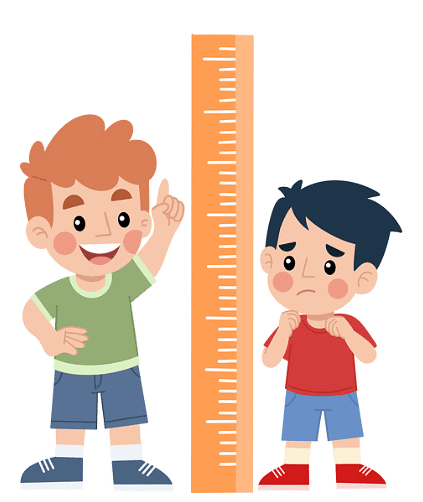Measurement - 2 Class 1 Worksheet Maths Chapter 7
 Q1: Multiple Choice Questions (MCQs)
Q1: Multiple Choice Questions (MCQs)
(i) What is the longest unit of measurement for length?
(a) Millimeter
(b) Centimeter
(c) Meter
(d) Kilometer
Ans: (c)
The longest unit of measurement for length is a meter. It's used to measure long distances, like roads and fields.
(ii) Which of the following is used to measure temperature?
(a) Clock
(b) Thermometer
(c) Ruler
(d) Scale
Ans: (b)
A thermometer is used to measure temperature. It tells us how hot or cold something is.
(iii) Which of these is a unit used to measure weight?
(a) Gram
(b) Liter
(c) Kilometer
(d) Meter
Ans: (a)
Gram is a unit used to measure weight. It tells us how heavy something is, like fruits or books.
(iv) What is the unit of measurement for the capacity of a bottle?
(a) Centimeter
(b) Liter
(c) Kilogram
(d) Meter
Ans: (b)
A liter is the unit for measuring the capacity of a bottle. It shows how much liquid the bottle can hold.
 (v) Which of the following can measure the length of a pencil?
(v) Which of the following can measure the length of a pencil?
(a) Scale
(b) Clock
(c) Thermometer
(d) Calendar
Ans: (a)
A scale can measure the length of a pencil. It helps us find out how long or short the pencil is.
Q2: Fill in the Blanks
(i) A ruler is used to measure _____________.
Ans: Length
(ii) There are ________ centimeters in one meter.
Ans: 100
(iii) The shorter unit of measurement is ___________.
Ans: Centimeter
(iv) To measure the weight of an object, we use a ________________.
Ans: Scale
(v) To measure the capacity of a container, we use a ___________.
Ans: Measuring cup

Q3: True or False
(i) A thermometer is used to measure time.
(ii) A scale measures length.
(iii) A clock can measure temperature.
(iv) Kilogram is a unit of weight.
(v) We use a cup to measure distance.
Ans:
(i) False
(ii) True
(iii) False
(iv) True
(v) False
Q4: Small Question - Statement Type
(i) What tool do we use to measure time?
Ans: We use a clock to measure time.
(ii) Name three units used to measure length.
Ans: Meter, centimeter, kilometer.
(iii) How do we measure the weight of an apple?
Ans: We use a scale to measure the weight of an apple.
(iv) What is the unit of measurement for capacity?
Ans: Liter (L)
(v) What is the difference between a clock and a calendar?
Ans: A clock tells the time, while a calendar shows the date and day.
|
15 videos|135 docs|23 tests
|
FAQs on Measurement - 2 Class 1 Worksheet Maths Chapter 7
| 1. What is the importance of measurement in everyday life? |  |
| 2. What are the different units used for measurement? |  |
| 3. How can measurement errors affect the accuracy of a result? |  |
| 4. What is the difference between precision and accuracy in measurement? |  |
| 5. How can we minimize measurement errors in experiments? |  |





















